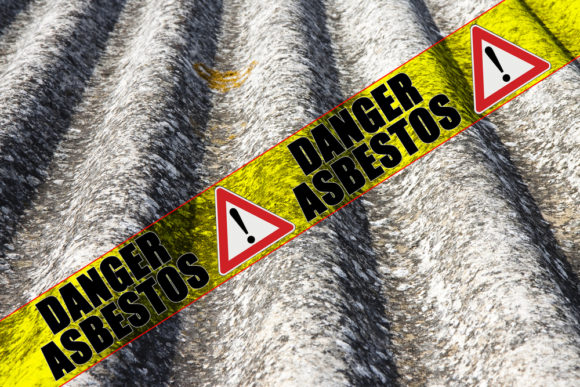The Supreme Court of the State of New York has ruled that American Home Assurance Company must defend contractors and the Port Authority of New York and New Jersey against asbestos claims from construction workers who became sick after performing work on the original World Trade Center.
The case, American Home Assurance Co. v. The Port Authority of New York and New Jersey et al., comes after a dispute involving a liability policy issued to The Port Authority of New York and New Jersey and other policyholders.
According to court records, American Home defended and settled asbestos claims relating to the construction of the World Trade Center, also known as the WTC Hudson Tubes Project, under the liability policy for 25 years. The Port Authority initially purchased the policy in February of 1966. In December of 1975, American Home sent the Port Authority notice of cancellation of the policy, effective in February of 1976.
American Home then filed this coverage litigation in 2012, contending that it has no obligation to defend the Port Authority and other policyholders against pending WTC asbestos claims because there is no way to prove injury occurred during the policy period.
American Home further argued that defendants’ personal injury claims due to the use of asbestos-containing spray-on fireproofing result in a single occurrence, for which the $10 million liability limit has already been exhausted.
Case Background
The WTC-Hudson Tubes Project was a large construction project involving multiple buildings and below grade areas, according to court records. Sitting on a 16-acre construction site in lower Manhattan, the project included the 110-story Twin Towers, a Plaza structure, the Northeast Plaza Building, the Southeast Plaza Building, the U.S. Customs Building, a hotel, 7 World Trade Centre and a new PATH station and underground tracks. There were 3,000 to 4,000 workers at the project on any day, according to the court document.
The Port Authority owned the WTC Hudson Tubes Project site. It characterized the policy it purchased from American Home as a wrap-up liability policy that covered the Port Authority and various contractors and subcontractors that worked on the construction of the WTC.
Alcoa was a contractor retained to install an aluminum curtain wall on the exterior of the two WTC towers. Mario & DiBono, now defunct, performed work at the WTC Hudson Tubes Project, including as a subcontractor of Alcoa, applying asbestos-containing fireproofing on the curtain wall. Tishman, operating under various entities, was the Port Authority’s agent and construction manager. The insureds include Mario & DiBono, Alcoa and Tishman.
Through the policy, American Home promised to pay all personal injury damages for which the insureds became legally obligated in connection with the project’s construction.
Personal injury is defined in the policy as including bodily injury, sickness, diseases, disability, shock, mental anguish and mental injury. The policy states that the company’s total liability limit for all personal injury damages caused by one occurrence is $10 million. The policy does not define the term occurrence, according to the court document.
It also includes a premises-operation hazard limitation, defined in the policy as “all operations, including operations completed, by or for the insured during the policy period in connection with the construction of the project.”
American Home contends that, based on this language, the policy only applies to personal injuries or property damage that occurred during the policy period.
Asbestos-Related Injury
Five claimants are listed in the court record as former workers in construction and related fields who worked on various construction sites in and around New York City. Each claimant sued the insureds sometime between 2011 and 2014, alleging a recent diagnosis of an asbestos-related illness, according to the court document.
The WTC asbestos claims vary in nature, timing and location of exposure, the court document says. Claimants allege exposure to a variety of asbestos materials, including sheetrock, joint compound, fireproofing, pipe insulation, cement, gaskets, insulation, floor tiles, elevator brakes, ceiling tiles, pumps and valves. They claim exposures in different years as well, ranging from the late-1960s to the mid-1970s and beyond. They also allege exposures in different locations, including one or both towers, the PATH areas, the Northeast Plaza Building, the Southeast Plaza Building and the US. Customs Building, the court document says.
The claimants worked for approximately 20 different companies and claim exposure in several ways, including through cleaning up asbestos material or through the release of asbestos fibers due to sanding or disturbing asbestos materials. They even allege take-home exposures, where the claimant was not present at the project, but was exposed to asbestos through a spouse who brought asbestos home, according to the court document.
Coverage Dispute
American Home contends in the court document that an actual diagnosable disease needed to exist during the policy period for the policy’s personal injury coverage to be triggered, and this did not occur during the policy period.
With this in mind, American Home seeks a declaration that the insureds cannot prove any of the claimants suffered injuries during the period covered under the policy, the court document says.
American Home says this is because, under New York law, proving injury requires proving actual injury. It argues it is impossible to prove an asbestos claimant who developed a disease within the past few years was injured more than three decades ago.
On the other hand, the Port Authority, Tishman and Alcoa seek a declaration that coverage is triggered under the policy for the WTC asbestos claims because the injuries alleged by the claimants resulted from the construction of the WTC.
Additionally, they argue coverage would be triggered for the WTC asbestos claims regardless, because personal injury sufficient to trigger the policy is alleged and could have occurred during the policy period.
Supreme Court Decision
Contrary to American Home’s arguments, Supreme Court Justice Eileen Bransten writes in the decision document that the plain language of the policy does not require injury during the policy period for coverage to be triggered.
Bransten states that under the plain language of the policy, coverage is triggered if the injury results from construction of the project, regardless of when the injury began.
“The policy makes clear that American Home must pay all sums that an insured becomes legally obligated to pay in connection with the construction of the project as damages because of personal injury,” Bransten says in the decision. “It is clear that it is the insureds’ operations, not a plaintiff’s injury, which must occur during the policy period to trigger coverage.”
Bransten goes on to say that for more than 20 years prior, American Home consistently applied the policy to provide coverage for the WTC asbestos claims when the plaintiffs alleged asbestos exposure during the project’s construction but were diagnosed with a disease after American Home says the policy period ended.
“For more than two decades, American Home acted as an insurer that understood that it had a clear coverage obligation,” Bransten says in the decision. “Because American Home’s reinterpretation of the policy is refuted both by a plain language reading of the applicable provisions, and by its own decades-long prior interpretation, American Home’s motion for a declaratory judgment is denied.”
The insureds’ motion for a declaratory judgment that coverage is triggered under the policy for the WTC asbestos claims was granted by the court.
Bransten further decided that the WTC asbestos claims due to spray-on fireproofing do not constitute a single occurrence under the policy and New York law. She ruled that the policy is not exhausted as a result of the WTC asbestos claims or the WTC fireproofing claims, and American Home cannot obtain a declaration of no coverage for pending WTC asbestos claims.
The New York Supreme Court ordered that the remainder of the action continue, and all parties are set to appear for a pre-trial conference on Jan. 16, 2018.
Topics Lawsuits Claims New York New Jersey Construction
Was this article valuable?
Here are more articles you may enjoy.



 Longtime Motel 6 Spokesman Tom Bodett Settles Lawsuit Against Chain
Longtime Motel 6 Spokesman Tom Bodett Settles Lawsuit Against Chain  FBI Involved After Two Florida Injury Lawyers Go Missing From Fishing Trip
FBI Involved After Two Florida Injury Lawyers Go Missing From Fishing Trip  Top National Insurance Journal Stories of 2025
Top National Insurance Journal Stories of 2025  Senators Launch Probe Into Demotech’s Ratings in Florida
Senators Launch Probe Into Demotech’s Ratings in Florida 


